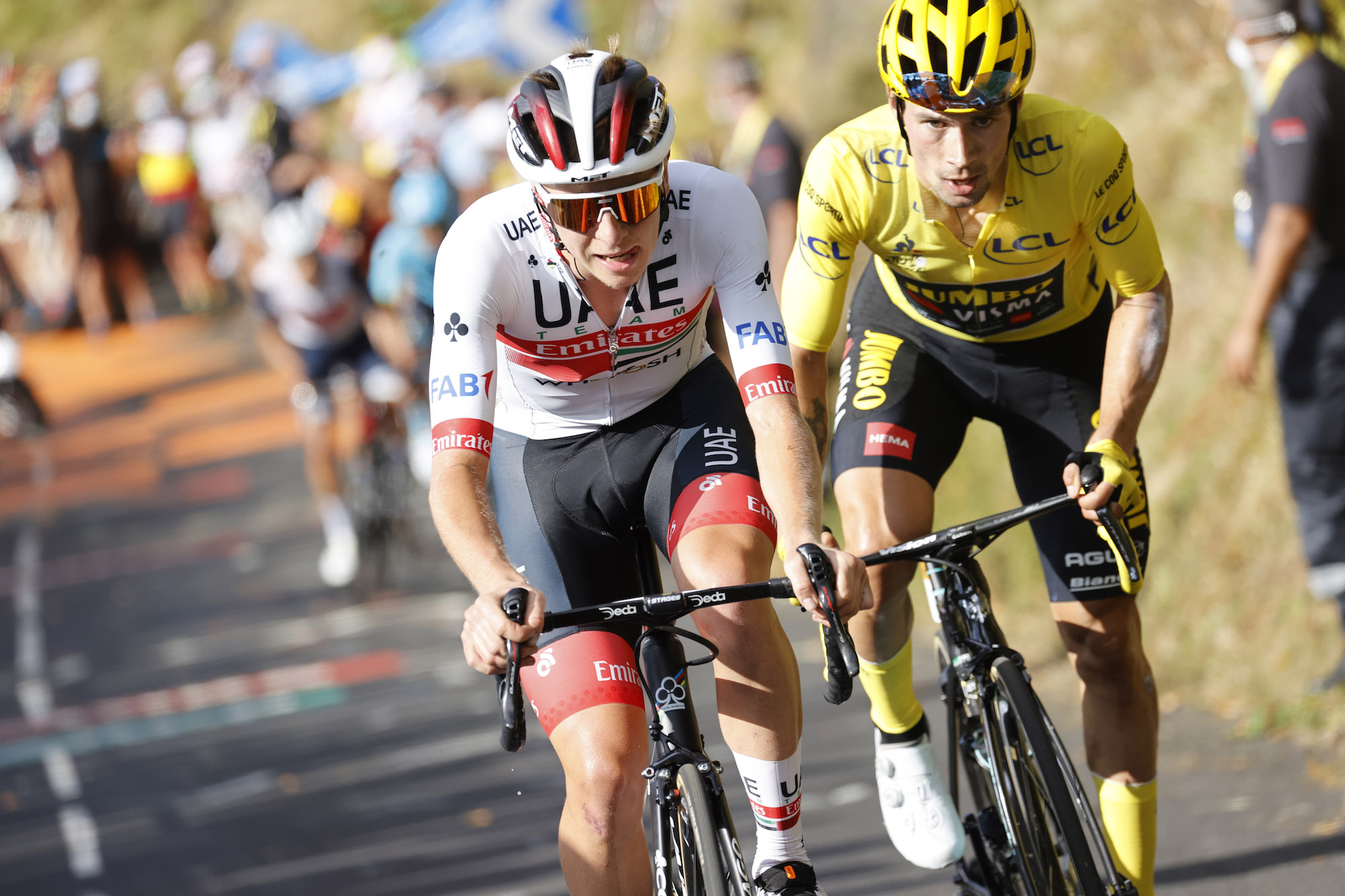Tour de France 2021 route analysis: Who does the new route suit best?
A well balanced route for Tour de France 2021 could play into the hands stronger, diesel engine riders rather than the explosive climbers

Primož Roglič and Tadej Pogačar on stage 13 of the 2020 Tour de France (Yuzuru Sunada)
At first glance, the route announced yesterday for the 2021 Tour de France looks like a very well-balanced design, one that favours no kind of rider in particular. The ratio of six mountainous stages to two time trials looks pretty standard, there is the usual generous helping of flat stages for the sprinters, and there are no nasty surprises like stages featuring cobblestones to throw a spanner in the works.
>>> 'We knew we had incredible talent': The inside story of Sunweb's rise
However, upon closer inspection, there are signs that this could be a Tour that leans towards the stronger, more powerful GC contenders over their lighter, purer climbs, with the key stages generally playing the hands of riders with diesel engines over those who rely on sprightly punches.
The most obvious example of this is the inclusion of two time trial stages. The first is 27km long and takes place in the opening week, the second on the penultimate day lasting 31km, and together amount to what will be the most individual time trialing kilometres of any Tour de France since 2013. That might not still be as much as the Tours of the 1990s and early 2000s, but it’s more than those in the contemporary peloton are used to.

More subtly, the key stages in the mountains also favour this kind of rider. Take stage 12, which is making headlines for its unprecedented two ascents of the legendary Mont Ventoux. With its exposed sections towards the top, the Ventoux is just as famous for its brutal winds as it is for its gradients, and any gains the purer climbers might enjoy on the steep sections are countered by how much harder they have to battle against the wind than their heavier opponents.
Of the three summit finishes, both stage nine’s Montee de Tignes and stage 18’s Luz Ardiden are notable for their length rather than their gradients, and are the kind of climbs where it's possible for a diesel engine to get into a rhythm. Only the Col du Portet at the end of stage 17, with its average gradient of 8.7 per cent and several stretches of over 10 per cent, looks like it would cause a real problem.
Then there’s the factor of the wind. This year’s Grand Départ location of Brittany is a region renowned for windy conditions, meaning that, should it blow hard enough and in the right direction, crosswinds could be a major factor over the first four days of the race. If so, the lighter riders who struggle in these conditions could see their GC chances ended even before they reach their first mountain.
The latest race content, interviews, features, reviews and expert buying guides, direct to your inbox!

All this could have significant implications as to how Ineos Grenadiers approach the race. The team boast a wealth of talent to choose from, from previous winners Egan Bernal and Geraint Thomas to rising stars like Tao Geoghegan Hart and Richard Carapaz, but no clear single leader to unite behind as they did during Chris Froome’s peak years, and for the first time since 2015 they’ll enter the Tour without the defending champion on their books.
Could the parcours prompt them to back Geraint Thomas as their leader? The Welshman might be the oldest of their potential GC candidates, but he’s also comfortably the best time triallist, loves climbs with steady gradients, and is very capable in crosswinds.
Even if they choose not to elect a single outright leader before the race, and instead opt to let the road decide, the early inclusion of the first time trial will play into Thomas’ hands. Do a good ride here, and he may find himself far enough ahead of his co-leaders to become the team’s single protected rider.
Another rider who will relish that early time trial, and the opening week on the whole, is Primož Roglič (Jumbo-Visma). The two punchy uphill finishes in the race’s opening weekend look tailor-made for him, to the extent that it would be a surprise if anyone other than him was in the yellow jersey by the end of that stage five time trial.
You’d expect defending champion Tadej Pogačar (UAE Emirates) to come into his own in the Alps at the end of the first week and the Pyrenees in the final week, but don’t expect him to have quite so much joy in the time trial this time around. Unlike last year’s single stage against the clock, neither of these two will feature a mountain, meaning the likes of Thomas and Roglič should be able to put time into him this time.
Stephen Puddicombe is a freelance journalist for Cycling Weekly, who regularly contributes to our World Tour racing coverage with race reports, news stories, interviews and features. Outside of cycling, he also enjoys writing about film and TV - but you won't find much of that content embedded into his CW articles.